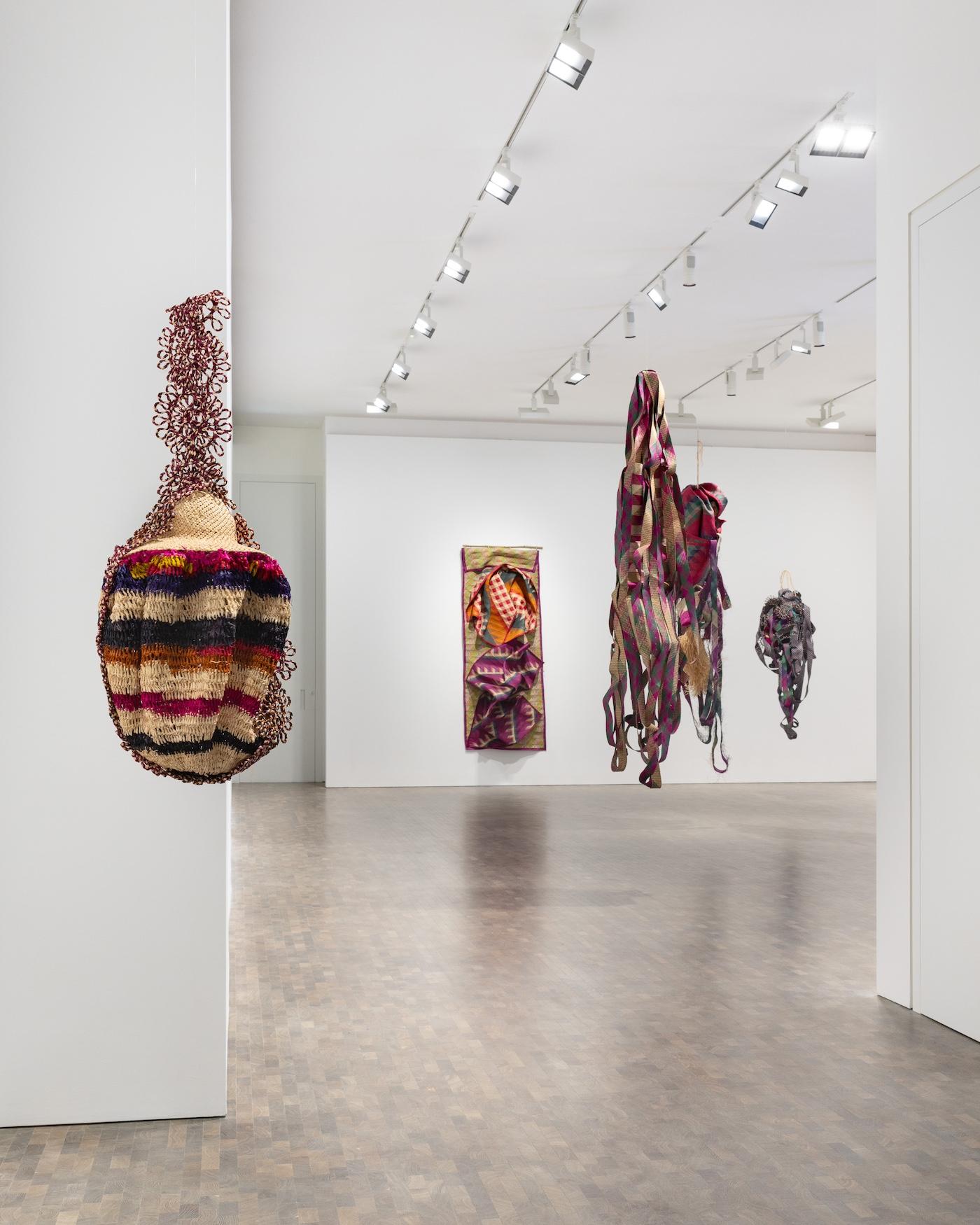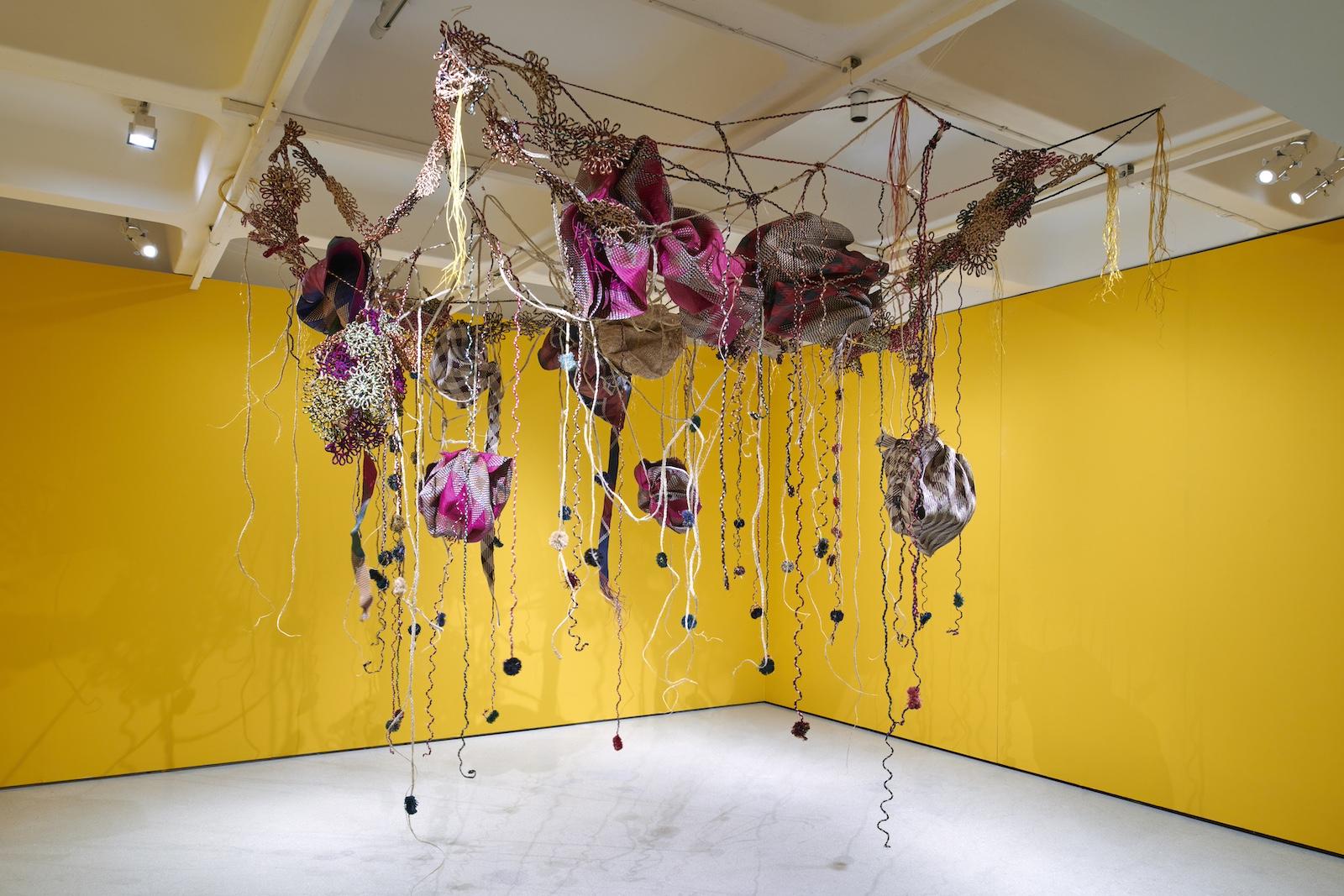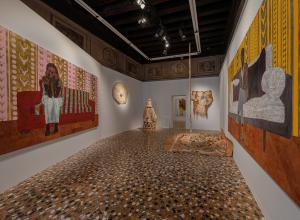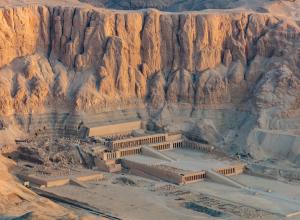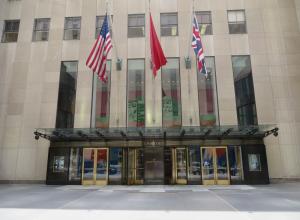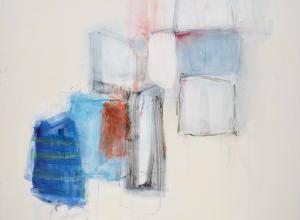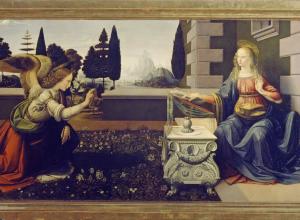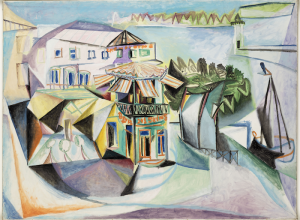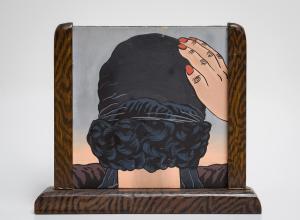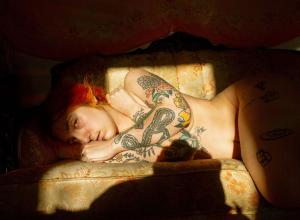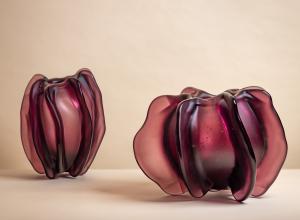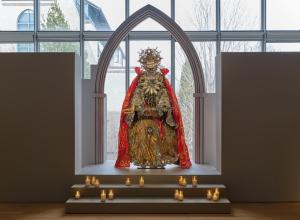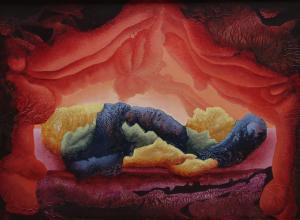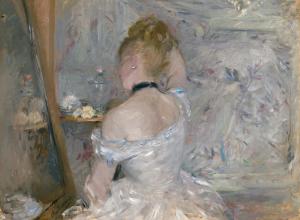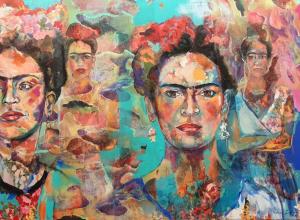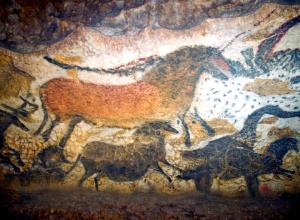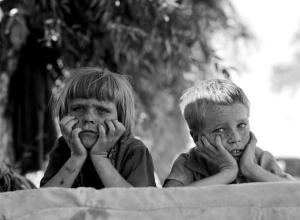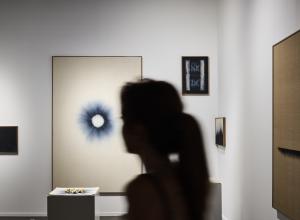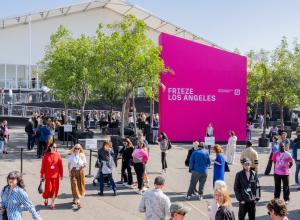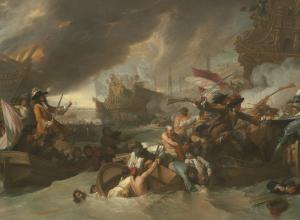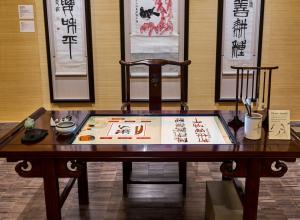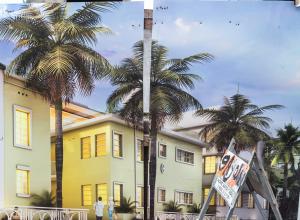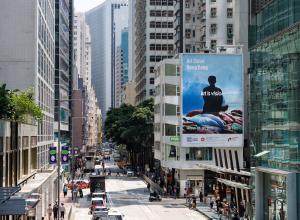KerunenŌĆÖs beautifully designed textile installation piecesŌĆōcreated from components meticulously crafted by community weavers, who are mostly women and artisansŌĆōcenter art making and environmental connection, while subverting and deconstructing attitudes about fine art versus craft, colonialism, racism, and sexism. She deliberately uses regional languages for the titles of her pieces to honor her African culture and heritage. Her installation work involves hand stitching, appending, knotting, embroidery, and weavingŌĆōusing traditional Ugandan materials such as banana fibre, palm leaves, reeds, beads, sisal, and bark cloth. Art & Object spoke with Kerunen to discuss her work.
Megan D Robinson: As a multidisciplinary artist, activist, and educator, you are involved in multiple genres as well as multiple educational, artistic, and outreach programs. How do you integrate and balance all these interests/aspects in your practice?
Acaye Kerunen: Life is seasonal. I simply breathe and flow with the season that presents itself. Of course with clear intentions.
MDR: What was it like being part of the inaugural Ugandan pavilion at the Venice Biennale?





